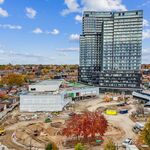44 North
Senior Member
Snow water and road salt are not a problem for the streetcars they have onboard sanders that give them traction when they need it. A decrotigvbe "art" pice isn't nedeed to cover the opening for any sort of protection at all
Sorry to go off topic, but re: the onboard sanders wondering if they work off an automated traction control system or are manually dumped. Be a neat feature for cars in northern climates. Car detects slippage and spews projectiles of sand at the wheel.




